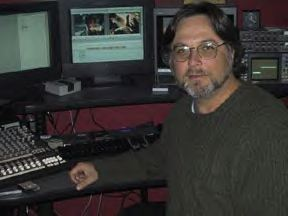
on the record with...
Bob Sarles
Michael Bloomfield Documentary
San Francisco, CA
July 22, 2007
By Victoria Joyce
(SugarBuzz Hollywood)
Mike Bloomfield: If You Love These Blues, Play 'Em As You Please
(A biographical documentary about the life and music of the late, great blues guitarist Michael Bloomfield. This film, currently in production features never before seen on camera interviews with such artists as Carlos Santana, BB King, Charlie Musselwhite, Elvin Bishop, Bob Weir, Al Kooper, John Hammond, Jr., Barry Goldberg, Sam Lay, Yank Rachel, Big Brother & The Holding Company, Jorma Kaukonen, Barry Melton, Mark Naftalin, Marty Balin, Country Joe McDonald, late music promoters Bill Graham and Chet Helms and others.)
Bob Sarles is a filmmaker who, together with his longtime partner Christina Keating, runs their San Francisco based film production company, Ravin’ Films. Ravin’ Films [http://www.ravinfilms.com/]. His passion is music. His recent projects include programs out on DVD including “Phil Lesh & Friends Live at the Warfield,” “Fly Jefferson Airplane” and “John Lee Hooker: Come and See About Me.” He’s done volumes for the Stax Museum in Memphis, Experience Music Project in Seattle, and the Rock and Roll Hall of Fame in Cleveland.
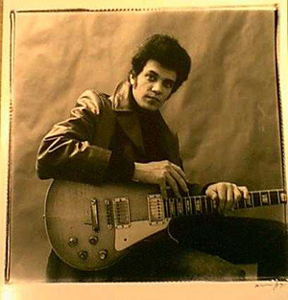
A few years ago we found out he was working on a documentary about Michael Bloomfield, the late great guitar player of the Paul Butterfield Blues Band and The Electric Flag. This interview has been on our ‘to do’ list since then.
Victoria: Bob, tell us about this project.
Bob: The idea hit me in the mid 80s. I had a career as film editor cutting commercials, music videos, documentaries, and working as an assistant editor on feature films. I was a huge fan of Michael’s work. I learned that he was a fascinating character. Tragically, he died too young. And because he had stayed out of the music business spotlight after an initial rush of fame, he kind of became a forgotten footnote in the history of music.
It struck me that someone should make a documentary film about Bloomfield. As no one else was going to do it, and I was looking for a project of my own to sink my teeth into, I took on the responsibility to make the film. As many first time filmmakers would tell you, if they knew how hard it would be to accomplish, they likely wouldn’t have begun the effort. That’s probably true with this project for me. But with every intention on completing the film in a year or two, I conducted my first interview for the project with B.B. King in 1989. Over the years I’ve completed about 25 interviews for the film, with musicians, promoters, Michael’s ex wife and his mother.
All this was done on my own time and dime in between my paying jobs. I must say that I could not have done these interviews without the help of my camera man Ted Leyhe and many crew members who have donated their time to acquiring the interviews over the years.
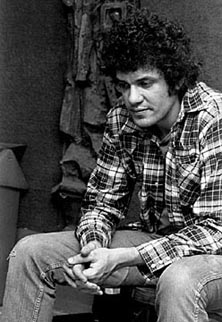
In the ‘90s, after a stint editing television commercials at Industrial Light & Magic, I started to work on more documentary films, and what’s now called reality television. I edited on three of the first four seasons of The Real World, and worked as a producer and editor on VH1’s Behind The Music. I got hired to direct films for the Rock and Roll Hall of Fame and the Stax Museum in Memphis. In the current decade, with my longtime partner Christina Keating, I began producing and directing DVD projects and concert films. All these projects were commissioned films of some sort, basically works for hire.
The Bloomfield film has yet to be finished yet because it’s a self financed film, and I haven’t raised enough money to complete the editing and post production. Also, there is a considerable budget to be raised for clearances of photos, posters, archival footage and music rights. I would have finished this a decade ago if it wasn’t for financial issues. The up-side of how long this process has taken is that today I’m a much more seasoned and experienced filmmaker than when I first started working on the film. The final film will benefit from all the experience I’ve gained on the films I’ve been hired to make.
Another one of the advantages of starting it so long ago is that I’ve got on camera interviews with some folks who are no longer with us, such as Bill Graham and Chet Helms. Another person interviewed who has passed is Yank Rachel a blues mandolin player. He was one of the original blues men. He knew and played with Robert Johnson and recorded with the original Sonny Boy Williamson back in 1927. Charlie Musselwhite put me in touch with him. What a joy it was to travel to Indianapolis to meet and interview Yank!
Victoria: Do you have a title for the film?
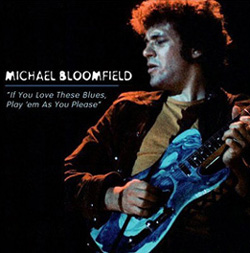
Bob: The working title is: “If You Love These Blues, Play’em As You Please.” That’s taken from the title of an instructional album that Michael made presenting different kinds of blues. Also, it was the title of an oral biography about Michael, by Jan Mark Wolkin and Bill Keenom. That book extensively borrowed material from the transcripts of interviews that were conducted for this film.
Victoria: Tell us about interviewing Bill Graham
Bob: It took several years of being very tenacious on my part to finally get Jan Simmons, Bill’s assistant, to schedule the interview with Bill. When I finally got to interview him I think he may have recognized my face from the lobby of the Warfield from so many shows that I had attended there.
Bill had an interesting relationship with Bloomfield. Bill fell in love with Michael’s playing in March of 1966 the first time the Paul Butterfield Blues Band played at the Fillmore Auditorium in San Francisco. Oddly enough it wasn’t a Bill Graham show; it was a Chet Helms - Family Dog show. In the early days they had an arrangement where Chet booked the show and Bill would take half the gate.
Bill Graham was at that show that night. The morning after, the band was crashing at Chet’s house. While they were still sleeping at Chet’s, Bill called their manager on the east coast, Albert Grossman (also manger for Dylan) and made a deal for the Butterfield Band to play exclusively for Bill Graham in San Francisco. That was the last Family Dog show at the Fillmore. Chet moved his operation to the Avalon Ballroom after that.

Bill loved to tell the story of how he screwed Chet. “You’ve got to get up early,” is what he always said. Chet was able to see the humor in it years later. I’ve got both of them telling the same story and laughing.
People would go to the Fillmore (and Avalon Ballroom) just to go. People were so high that the unpolished acts got away with being background music for the gathering and light shows. In early 1966, the San Francisco bands, who for the most part were folkies who recently took up electric guitars, were still figuring out how to play to their instruments.
The Paul Butterfield Blues Band had been playing in black clubs on the South Side of Chicago for years and it was a mixed band with black and white members. The Butterfield band at that time also had the dual guitars of Bloomfield and Elvin Bishop. Fronted by singer and blues harp player Paul Butterfield, piano man Mark Naftalin, Jerome Arnold on bass, and Sam Lay on drums, the Butterfield band blew away the San Francisco audience, many of whom were the cream of the San Francisco psychedelic bands.
Mike Bloomfield was the guitar player that all of them fell in love with; Jorma Koukoken (The Airplane), James Gurley, Sam Andrew (Big Brother and the Holding Company), Jerry Garcia (The Grateful Dead). All of them were blown away by Michael’s abilities. Their impact on the scene was tremendous.
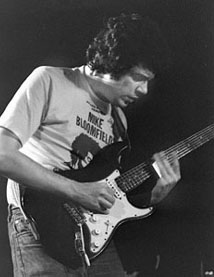
Another story is Bloomfield’s mother showing up at Winterland to see his show. Her name was not on the list. She got very indignant. Someone had made a mistake. There was a scene. Bill came out to straighten out the situation. Hours later Bill found Michael backstage and told him his mother was in the house. Bloomfield’s response was “tell her I’m not here.” And I’ve got Bill and his Mother telling both sides of this story.
Victoria: There’s a story that the first time B.B. King played the Fillmore he thought he was in the wrong place. He’d never played before an all white audience before. What part did Michael have in B.B. King being booked at the Fillmore?
Bob: B.B. King tells that story himself in the film. Michael introduced Bill Graham to the original blues artists. Michael told him that the Butterfield Blues band was basically a cover band of the real deal, and if you want the real deal, listen to Muddy Waters, B.B. King, etc. He knew this because he’d been hanging out with them in Chicago for years.
Graham got it. He said these guys, the older blues guys were the main course, and the San Francisco bands were the dessert. So Bill brought them to the Fillmore to play before the young kids, the white college kids. This helped guys like John Lee Hooker and all these Chicago blues musicians have another chapter to their careers.
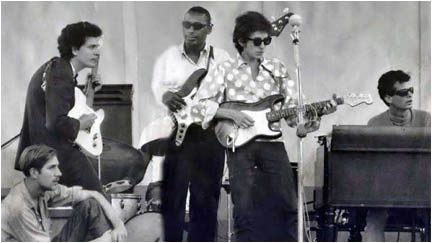
Bloomfield played on Dylan’s “Highway 61 Revisited” along with Al Kooper. And he played with Dylan the first time he played electric at the famous Newport Folk Festival. The one where they got boo’ed. Kooper swears they only boo’ed because the crowd waited all day to see Bob and the set was so short because they only rehearsed a couple of songs.
Bloomfield’s “Super Session” album with Al Kooper sold really well and helped introduce him to a larger audience. The follow up live album has a Norman Rockwell portrait of Bloomfield and Kooper on the cover. The making of both of these records have stories of high drama behind them. Michael bailed halfway through the Super Session recordings and Kooper had to find Stephan Stills to fill in for side two. On the live album, Michael, suffering from insomnia was a no show the second of two nights that were being recorded for the record at the Fillmore. Carlos Santana, then a young, unsigned guitarist, filled in.
Michael had his demons. He didn’t want success as defined by the music industry. But he really loved the music and wanted to turn people on to it. But he would not accept the spotlight.
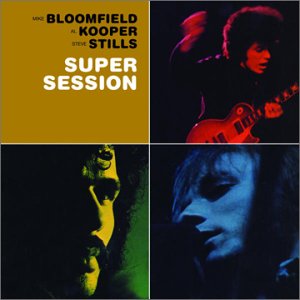
The drugs became a problem at times. He wasn’t a junkie in the classic sense. The dope was just a way to get to sleep. His real problem was not being able to sleep for long periods of a time. He used the dope to dial down his own natural adrenaline. If he had survived, today’s medicine would probably have been able to help with the proper meds.
This is a film that needs to get made.
Victoria: What performance footage do you have?
Bob: This film is not a performance film. There will be some performance clips from Newport, Monterey and some rare television performances included in the narrative. The Airplane and the John Lee Hooker programs I produced with Christina Keating contain entire song performances, with context giving interview segments book-ending the song clips. These programs feel like a documentary, but they are really compilations of performances. Other projects I’ve directed and edited are more story driven, so you have interviews interrupting the performances in order to move the story forward. The Bloomfield film is a story driven documentary.
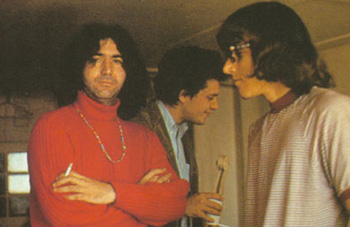
Unfortunately, there is no footage of the Butterfield Band at the Fillmore or the Avalon. There is footage of Dylan and the Butterfield Band at Newport, Electric Flag at Monterey, and some rare television performances we’ve uncovered. As an editor I know how to take advantage of the footage we have found to tell the story. I’ve interviewed a lot of people. There are extensive audio interviews with Michael that were conducted by his friend Dan McCloskey. These interviews with Michael will be utilized so that Bloomfield’s own extemporaneous voice will narrate a significant portion of the film.
We also have an archive of photographs, much of it by the famed photographer Jim Marshall. Marshall and Michael were very good friends. Jim has a treasure trove of previously unpublished photos of Michael that we have access to for the film.
Victoria: Is there a release date on the horizon?
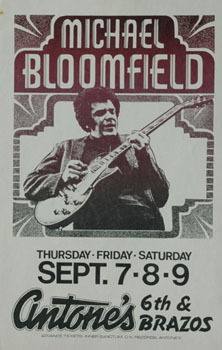
Bob: The sooner some angel steps up and cuts me a check for the completion costs the sooner it will be done. It’s been eighteen years in the making funded by my credit cards till now.
The next phase will be sitting down and editing this film. We need four to five months in order to complete the last few interviews, edit the film and account for all of our archival footage and music use. Phase three will be the more difficult part, to raise the money for performance rights and make the final deals for all the footage and music used.
I’m hoping to have a festival cut by the end of the year. Though I’ve made a number of films, this is the first project this involved that hasn’t been commissioned by someone else footing the bill. It’s an expensive process.
I think that it’s important to get Michael’s story out there. He was a very important and influential artist, and he deserves to be remembered. I think it makes for a great story, and I am sure will be an entertaining film when it’s completed.